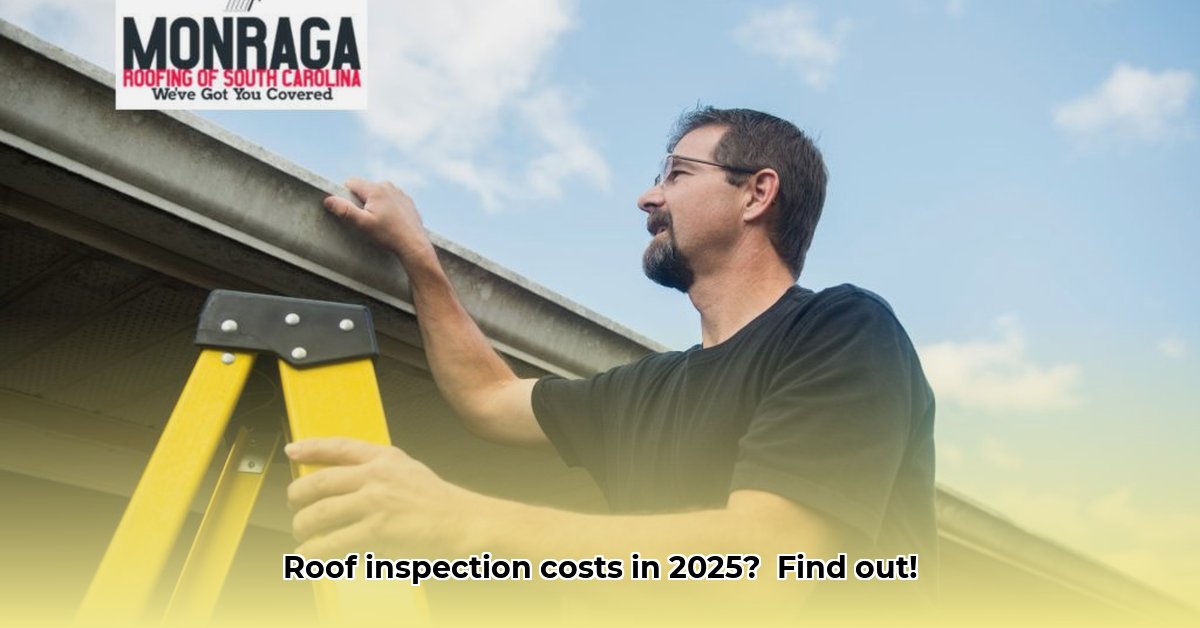Thinking about your roof? Whether you’re planning repairs, selling your house, or just want peace of mind, a roof inspection is a smart move. But how much will it set you back? This guide breaks down everything you need to know about roof inspection costs in simple terms. We’ll cover different types of inspections – from the traditional hands-on kind to high-tech drone and thermal imaging – and show you how much each one typically costs. We’ll help you find the best deal without cutting corners, explain why a qualified inspector is so important, and give you tips to keep your roof in top shape for years to come. Plus, we’ll point out common pitfalls to avoid, so you can make smart choices and dodge unexpected expenses. Whether you’re a homeowner, selling your property, or work in insurance, this guide will give you the confidence to tackle roof inspections head-on.
Roof Inspection Costs and Home Value: Navigating the Financial Implications
Let’s talk about roof inspections – something nobody really wants to think about, but something everyone should. Figuring out the cost can feel like navigating a maze, but we’ll break it down in plain English. The price you pay isn’t just about the inspector’s time; it’s about the kind of information you get in return. And that information can save you a lot of money – or heartache – down the road.
Understanding the Variables Affecting Roof Inspection Cost
The cost of a roof inspection isn’t a simple number; it’s a moving target, influenced by several factors. Think about the size and complexity of your roof. A sprawling, Victorian-era masterpiece with multiple peaks and valleys? Expect a higher cost than a simple ranch-style home. Accessibility matters, too. A steep, tricky roof will take longer to inspect, bumping up the price. The inspector might even need special equipment, further impacting the final bill.
The type of inspection you choose is a major factor. A basic visual inspection – basically, someone walking around and looking – is the most affordable. However, it might miss hidden problems. A drone inspection allows for a detailed aerial view, perfect for larger, trickier roofs, but it’ll cost more. Infrared thermal imaging uses heat signatures to spot hidden moisture problems – a huge benefit – but it’s the priciest option.
Here’s a general cost breakdown, remember these are estimates and can vary widely by location and inspector:
| Inspection Type | Typical Cost Range | Advantages | Disadvantages |
|---|---|---|---|
| Visual Inspection | $75 – $250 | Budget-friendly, quick results | Might miss hidden issues |
| Drone Inspection | $150 – $500 | Detailed view, good for large or hard-to-reach roofs | Weather-dependent; equipment adds to the cost |
| Infrared Thermal Scan | $400 – $800 | Detects hidden moisture; comprehensive report | Most expensive; needs specialized expertise |
Breaking Down the Roof Inspection Cost – What You’re Paying For
Think of it like this: you’re paying for peace of mind and information. A quick visual check is like getting a snapshot – you see the obvious stuff. A drone inspection is like getting a detailed aerial photograph – suddenly you’re seeing things you never knew were there. An infrared scan is like getting an X-ray – it reveals hidden problems like water damage that could lead to major, expensive repairs down the road. You need to weigh the cost against the possibility of early problem detection; catching something small now can prevent a much bigger (and costly) issue later.
Don’t forget, a roof certification usually adds another $75-$200 to the total cost. This official document is especially helpful for selling a house. It provides buyers with something concrete to look at and adds to the overall value proposition of your home. Is the expense of an advanced inspection worth potentially avoiding thousands of dollars in future repairs?
Who Needs a Roof Inspection?
If you’re selling your home, a roof inspection is almost always a necessity; buyers often make it a condition of the sale. Even if you’re not selling, regular inspections are a smart preventative measure. Catching small problems early can save you from big expenses later on. Your insurance company might also require an inspection after a major storm or other weather event.
Choosing the Right Inspection for Your Needs: Finding the Sweet Spot
The best type of inspection depends on your circumstances and budget. Selling your house? A thorough drone or infrared inspection adds value and reassures potential buyers. Just want a quick check-up? A basic visual inspection might be sufficient. The key is to choose the option that best balances your needs and budget. Always, always get multiple quotes from different inspectors to make sure you’re getting a fair price.
Maximizing Your Return on Your Roof Inspection Investment
Remember, a roof inspection is an investment, not just an expense. The information it provides will help you make smart decisions about repairs. Early detection of problems saves money in the long run. The best approach is to weigh the cost of the inspection against the potential cost of future, larger repairs. Spending a bit more on a thorough inspection now could save you thousands later. It’s all about smart decision-making and preventative maintenance. The payoff is well worth it.
How to Choose the Best Roof Inspection Method for Your Home
Key Takeaways:
- Regular roof inspections are vital for preventing costly repairs and extending your roof’s lifespan.
- Inspection frequency varies; annual checks are common, with more frequent inspections recommended as your roof ages.
- Different inspection methods exist, each with varying costs and levels of detail.
- Professional inspections are crucial for comprehensive evaluations, especially for insurance claims or complex roof issues.
- Choosing a qualified, insured inspector is paramount.
Understanding Your Roof Inspection Needs
First, consider your roof’s age and condition. Is it new, nearing the end of its lifespan, or somewhere in between? A newer roof might only need a basic visual inspection. Older, more complex roofs need a more thorough evaluation. Think of it like a car—a routine checkup for a new car versus a major tune-up for an older one.
Next, what’s your budget? Basic visual inspections are the most affordable, while drone and infrared thermal imaging add to the cost. Weigh the benefits of a thorough examination against the expense. Remember, preventing costly repairs later is often cheaper than extensive repairs.
Finally, why do you need an inspection? Is it for peace of mind, insurance purposes, or because you’re planning a substantial home improvement project? Insurance requirements often dictate the type of evaluation needed. Are you willing to spend more now to potentially save thousands later by identifying hidden issues?
Roof Inspection Methods: A Comparison
Several methods exist for inspecting your roof. How to choose the best roof inspection method for your home depends on your specific circumstances:
- Visual Inspection (Ground Level): This is the most economical option, ideal for basic checks on newer roofs. However, it’s limited in its ability to detect hidden problems.
- Visual Inspection (Roof Level): A more thorough assessment conducted from the roof itself. This allows for closer examination of crucial components but carries inherent safety risks—it’s best done by a professional.
- Drone Inspection: Drones offer a safe and efficient method for inspecting large or difficult-to-access areas. High-resolution images allow for detailed examination.
- Infrared Thermal Imaging: This advanced technique detects temperature variations, revealing hidden moisture problems and potential leaks invisible to the naked eye.
| Method | Cost Range | Pros | Cons | Best For |
|---|---|---|---|---|
| Visual (Ground Level) | $100-$200 | Affordable, quick | Limited detection capabilities | Newer roofs, basic checks |
| Visual (Roof Level) | $200-$300 | More thorough than ground-level | Requires access, potentially dangerous | Older roofs, specific concerns |
| Drone Inspection | $400-$600 | Safe, efficient, detailed images, reaches hard-to-reach areas | More expensive | Large roofs, complex roof designs, difficult access areas |
| Infrared Thermal Imaging | $500-$800+ | Detects hidden moisture, pinpoint leaks | Most expensive | Identifying hidden water damage, pre-purchase inspections |
Choosing the Right Inspector
Selecting a qualified professional is crucial. Look for certifications, insurance, excellent reviews, and detailed reports (including photos). Ask for references and compare quotes from several inspectors before making a decision. Remember, a thorough inspection can save you significant money in the long run.
This Old House offers helpful advice on selecting a reliable contractor; while the source might not directly address inspection method selection, their guidance on contractor vetting applies. Have you checked local review sites for customer feedback on roof inspectors in your area?
Scheduling Your Inspection
Once you’ve chosen your method and inspector, schedule your roof inspection. This is an investment in your home’s longevity and financial protection. Knowing what to expect ensures a smooth process. Proactive maintenance is key—a well-maintained roof can save you money and headaches.
Drone Roof Inspections: A Detailed Guide for Steep-Slope
- Backsplash For Gray Cabinets: Choosing the Right Backsplash Style - December 13, 2025
- Gray And White Backsplash: Ideas For Timeless Style - December 12, 2025
- Gray Kitchen Backsplash Ideas: Find Your Perfect Gray Tile - December 11, 2025









